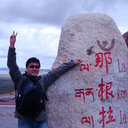Antioxidant and anti-inflammatory effects of Astragalus polysaccharide on EA.hy926 cells.
Słowa kluczowe
Abstrakcyjny
The aim of this study was to explore the role of astragalus polysaccharide (APS) in the pathogenesis of bronchopulmonary dysplasia (BPD) in preterm children using an established BPD cell model. EA.hy926 cell cultures were divided into three groups: the air group as the blank control, the hyperoxia group as the experimental control and the APS group (2.5 mg/ml). The production of superoxide dismutase (SOD), malondialdehyde (MDA) and reactive oxygen species (ROS) were analyzed by biochemical assays. Real-time reverse transcription-polymerase chain reaction (RT-PCR) and western blotting were used to detect the RNA and protein expression levels of inflammatory cytokines, including interleukin (IL)-8, intercellular adhesion molecule 1 (ICAM-1) and nuclear factor (NF)-κB p65. Compared with the hyperoxia group, the ROS and MDA levels of the APS group were significantly reduced. By contrast, SOD production was significantly increased. The expression of IL-8, ICAM-1 and NF-κB p65 in the APS group was downregulated. APS acts as an antioxidant by stimulating SOD production while inhibiting lipid peroxidation in the EA.hy926 cells. Furthermore, this study demonstrated that APS retards the inflammatory response, as shown by the reduced expression of NF-κB p65, IL-8 and ICAM-1 when APS was added.


